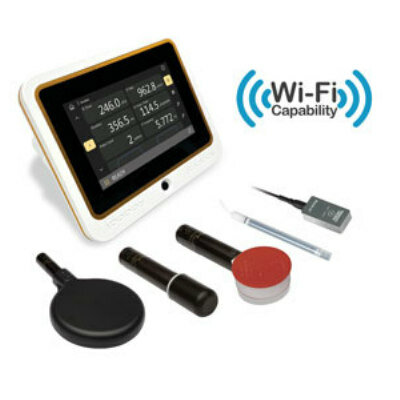New PET/CT Technique Accurately Detects Neuroblastoma in Children with Short Scan Time and No Anesthesia
|
By MedImaging International staff writers Posted on 22 Aug 2024 |
![Image: [18F]MFBG LAFOV PET/ULD CT (top) and [123I]MIBG scintigraphy with SPECT/LD CT images (bottom) of 7-wk-old girl with neuroblastoma (Photo courtesy of The Journal of Nuclear Medicine) Image: [18F]MFBG LAFOV PET/ULD CT (top) and [123I]MIBG scintigraphy with SPECT/LD CT images (bottom) of 7-wk-old girl with neuroblastoma (Photo courtesy of The Journal of Nuclear Medicine)](https://globetechcdn.com/mobile_medicalimaging/images/stories/articles/article_images/2024-08-22/JNM Aug 2024 - Borgwardt Figure 3A.jpg)
Neuroblastoma, the most common extracranial solid tumor in children, has an overall survival rate of 70%. Traditionally, the 123I-MIBG SPECT/CT scanning procedure has been the standard of care for staging, monitoring response, and follow-up in these cases. This method involves a two-day protocol where sedation or general anesthesia is often necessary, especially as the procedure lasts over two hours and is primarily used for infants. Minimizing radiation exposure and avoiding sedation is critical for young patients. Researchers have now introduced a new molecular imaging method that utilizes a novel tracer combined with an advanced PET/CT scanner to identify neuroblastoma in children with high sensitivity, requiring a scan time of just minutes and no sedation or anesthesia.
Developed by specialists at Copenhagen University Hospital-Rigshospitalet (Copenhagen, Denmark), the 18F-MFBG LAFOV PET/CT method enables precise accurate diagnosis and aids in therapeutic decision-making for neuroblastoma in children. This technique employs the tracer 18F-MFBG and only requires a single-day protocol using a long-axial-field-of-view (LAFOV) PET/CT scanner, which is about 10 times more sensitive than conventional digital PET/CT scanners. Researchers conducted a comparative study using both the 123I-MIBG SPECT/CT and the new 18F-MFBG LAFOV PET/CT on 10 children with neuroblastoma, assessing the diagnostic accuracy and practicality of both methods.
The findings published in the August issue of The Journal of Nuclear Medicine showed that 18F-MFBG LAFOV PET/CT eliminated the need for sedation or anesthesia, with 80% of children requiring anesthesia under the traditional method. The new PET/CT procedure required only two minutes to acquire images free from motion artifacts, sufficient for producing clinically useful images. The 18F-MFBG LAFOV PET/CT also detected more lesions than the 123I-MIBG SPECT/CT in 80% of cases, with the remaining 20% showing equal lesion detection. Furthermore, the SIOPEN and Curie scores, which assess metastatic disease burden, indicated more extensive disease with the new PET/CT method. This technique also provided a more precise diagnosis of intraspinal, retroperitoneal lymph node, and bone marrow involvement.
“A scan with a much higher sensitivity can find very small lesions and the exact extension in the body and can be extremely beneficial in determining the right course of treatment,” said Lise Borgwardt, MD, PhD, senior consultant in pediatric nuclear medicine at Copenhagen University Hospital-Rigshospitalet. “The fact that these scans can be performed without anesthesia or sedation, and at a lower radiation dose is a big step forward for the children, parents, and the healthcare system in general.”
Related Links:
Copenhagen University Hospital-Rigshospitalet
Latest Nuclear Medicine News
- Novel Bacteria-Specific PET Imaging Approach Detects Hard-To-Diagnose Lung Infections
- New Imaging Approach Could Reduce Need for Biopsies to Monitor Prostate Cancer
- Novel Radiolabeled Antibody Improves Diagnosis and Treatment of Solid Tumors
- Novel PET Imaging Approach Offers Never-Before-Seen View of Neuroinflammation
- Novel Radiotracer Identifies Biomarker for Triple-Negative Breast Cancer
- Innovative PET Imaging Technique to Help Diagnose Neurodegeneration
- New Molecular Imaging Test to Improve Lung Cancer Diagnosis
- Novel PET Technique Visualizes Spinal Cord Injuries to Predict Recovery
- Next-Gen Tau Radiotracers Outperform FDA-Approved Imaging Agents in Detecting Alzheimer’s
- Breakthrough Method Detects Inflammation in Body Using PET Imaging
- Advanced Imaging Reveals Hidden Metastases in High-Risk Prostate Cancer Patients
- Combining Advanced Imaging Technologies Offers Breakthrough in Glioblastoma Treatment
- New Molecular Imaging Agent Accurately Identifies Crucial Cancer Biomarker
- New Scans Light Up Aggressive Tumors for Better Treatment
- AI Stroke Brain Scan Readings Twice as Accurate as Current Method
- AI Analysis of PET/CT Images Predicts Side Effects of Immunotherapy in Lung Cancer
Channels
Radiography
view channel
AI Detects Fatty Liver Disease from Chest X-Rays
Fatty liver disease, which results from excess fat accumulation in the liver, is believed to impact approximately one in four individuals globally. If not addressed in time, it can progress to severe conditions... Read more
AI Detects Hidden Heart Disease in Existing CT Chest Scans
Coronary artery calcium (CAC) is a major indicator of cardiovascular risk, but its assessment typically requires a specialized “gated” CT scan that synchronizes with the heartbeat. In contrast, most chest... Read moreMRI
view channel
New MRI Technique Reveals Hidden Heart Issues
Traditional exercise stress tests conducted within an MRI machine require patients to lie flat, a position that artificially improves heart function by increasing stroke volume due to gravity-driven blood... Read more
Shorter MRI Exam Effectively Detects Cancer in Dense Breasts
Women with extremely dense breasts face a higher risk of missed breast cancer diagnoses, as dense glandular and fibrous tissue can obscure tumors on mammograms. While breast MRI is recommended for supplemental... Read moreUltrasound
view channel
Wireless Chronic Pain Management Device to Reduce Need for Painkillers and Surgery
Chronic pain affects millions of people globally, often leading to long-term disability and dependence on opioid medications, which carry significant risks of side effects and addiction.... Read more
New Medical Ultrasound Imaging Technique Enables ICU Bedside Monitoring
Ultrasound computed tomography (USCT) presents a safer alternative to imaging techniques like X-ray computed tomography (commonly known as CT or “CAT” scans) because it does not produce ionizing radiation.... Read moreGeneral/Advanced Imaging
view channel
CT Colonography Beats Stool DNA Testing for Colon Cancer Screening
As colorectal cancer remains the second leading cause of cancer-related deaths worldwide, early detection through screening is vital to reduce advanced-stage treatments and associated costs.... Read more
First-Of-Its-Kind Wearable Device Offers Revolutionary Alternative to CT Scans
Currently, patients with conditions such as heart failure, pneumonia, or respiratory distress often require multiple imaging procedures that are intermittent, disruptive, and involve high levels of radiation.... Read more
AI-Based CT Scan Analysis Predicts Early-Stage Kidney Damage Due to Cancer Treatments
Radioligand therapy, a form of targeted nuclear medicine, has recently gained attention for its potential in treating specific types of tumors. However, one of the potential side effects of this therapy... Read moreImaging IT
view channel
New Google Cloud Medical Imaging Suite Makes Imaging Healthcare Data More Accessible
Medical imaging is a critical tool used to diagnose patients, and there are billions of medical images scanned globally each year. Imaging data accounts for about 90% of all healthcare data1 and, until... Read more
Global AI in Medical Diagnostics Market to Be Driven by Demand for Image Recognition in Radiology
The global artificial intelligence (AI) in medical diagnostics market is expanding with early disease detection being one of its key applications and image recognition becoming a compelling consumer proposition... Read moreIndustry News
view channel
GE HealthCare and NVIDIA Collaboration to Reimagine Diagnostic Imaging
GE HealthCare (Chicago, IL, USA) has entered into a collaboration with NVIDIA (Santa Clara, CA, USA), expanding the existing relationship between the two companies to focus on pioneering innovation in... Read more
Patient-Specific 3D-Printed Phantoms Transform CT Imaging
New research has highlighted how anatomically precise, patient-specific 3D-printed phantoms are proving to be scalable, cost-effective, and efficient tools in the development of new CT scan algorithms... Read more
Siemens and Sectra Collaborate on Enhancing Radiology Workflows
Siemens Healthineers (Forchheim, Germany) and Sectra (Linköping, Sweden) have entered into a collaboration aimed at enhancing radiologists' diagnostic capabilities and, in turn, improving patient care... Read more






 Guided Devices.jpg)










.jpeg)


